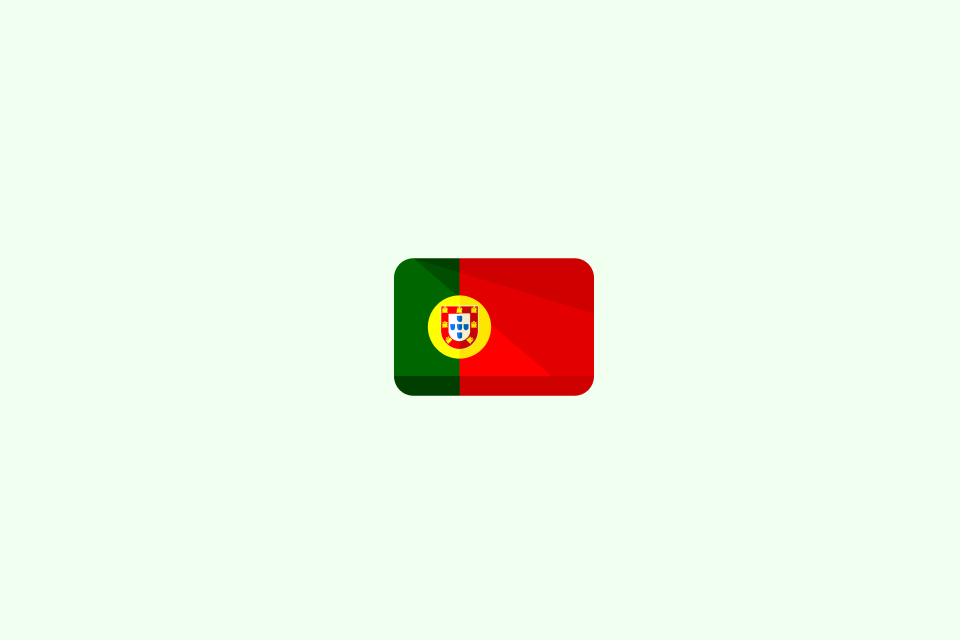Portuguese: Your Bridge Across Four Continents

TABLE OF CONTENTS
Understand how Portuguese grew from a small Atlantic kingdom into the voice of Brazil, Portugal, and Lusophone Africa—and learn how to speak, localize, and translate it with confidence.
Why Portuguese Deserves Your Attention in 2025
Portuguese counts over 260 million native speakers and is forecast to surpass 300 million within two decades thanks to Brazil’s demographics. That reach translates into tangible advantages:
- Four-continent footprint across Europe, South America, Africa, and Asia (Macau/Timor-Leste)
- Booming digital markets—Brazil is the fifth-largest internet population and a top-three app download market
- Cross-border industries including energy, fintech, agribusiness, aviation maintenance, and pop culture (music, streaming, gaming)
- Talent shortage—Lusophone localization remains under-served compared with Spanish, French, or German
→ Takeaway: Mastering Portuguese amplifies any global expansion strategy—especially if Latin America or Africa sits on your roadmap.
Where Portuguese Lives Today
Portuguese is the official language of the Community of Portuguese Language Countries (CPLP): Portugal, Brazil, Angola, Mozambique, Cape Verde, Guinea-Bissau, São Tomé and Príncipe, and Equatorial Guinea. Beyond the CPLP:
- Diaspora hubs flourish in Newark, Toronto, Luxembourg, Paris, Tokyo, and Johannesburg.
- Brazil drives media exports (Globo, Bossa Nova Studios, Spotify charts) that influence vocabulary globally.
- Portugal anchors EU regulatory content, fintech, and tourism.
- Angola and Mozambique fuel energy and infrastructure translation demand; their Portuguese variants are increasingly sought in tech and fintech.
- Cape Verde, Guinea-Bissau, and São Tomé and Príncipe drive tourism and cultural exports (music, literature).
- Macau and Timor-Leste maintain Portuguese alongside local languages, representing emerging education and tech hubs.
For localization teams that need to prioritize, think in three tiers: Brazil, Portugal, and Lusophone Africa—each has distinct cultural and lexical needs.
From Latin to Lusophone: A Short History
Portuguese emerged from the romance dialects of Roman Lusitania, then evolved through seafaring expansion. Key milestones:
| Period | Milestone | Why It Matters |
|---|---|---|
| 12th century | Galician-Portuguese poetry | Establishes the earliest written corpus |
| 1415-1600 | Age of Discoveries | Portuguese travels to Africa, Brazil, India, and Japan |
| 1822 | Brazil’s independence | Creates divergent standards, vocabulary, and identity |
| 1911 & 1945 | Orthographic reforms | Align Portuguese spelling; Brazil adopts its own rules |
| 1990 AO | Orthographic Agreement | Moves Brazil/Portugal toward a unified spelling norm |
Today, official orthography is aligned across CPLP nations, but pronunciation and usage continue to reflect regional histories—from indigenous Tupí loanwords in Brazil (abacaxi, capim) to Kimbundu influence in Angola and Makua terms in Mozambique.
How Portuguese Sounds
Portuguese uses the Latin alphabet but adds diacritics (á, ã, â, é, ê, í, ó, ô, õ, ú, ç). Three sound features stand out:
- Nasal vowels (ã, õ, ão, em, en) give Brazilian Portuguese its distinctive resonance. These are produced by directing airflow through both the nose and mouth simultaneously—practice by holding ã while pinching your nose lightly. Europeans and Africans use them more sparingly, shifting tone perceptibly.
- Open vs. closed vowels differentiate meaning: avó (grandmother) vs. avô (grandfather). Pay special attention to é/ê and ó/ô pairs.
- Digraphs such as lh /ʎ/, nh /ɲ/, and ch /ʃ/ bring unique consonant textures absent in Spanish.
Rhythm differs markedly across the Atlantic. European Portuguese compresses unstressed vowels, creating a quick, “murmured” cadence, while Brazilian Portuguese is more syllable-timed and melodic. Learners should dedicate a week to intensive listening just to internalize these patterns before diving into grammar drills.
Common pitfall: Spanish speakers often blur Portuguese lh/ll and nh/ñ—record yourself daily until these feel automatic.
Grammar Essentials Without the Overwhelm
Portuguese and Spanish share Latin roots, yet Portuguese adds twists that reward early attention:
- Verb conjugations use three infinitive endings (-ar, -er, -ir) plus the uniquely Portuguese personal infinitive, allowing subject-marked infinitives (para fazermos = “for us to do”). This has no Spanish equivalent.
- Clitic pronouns shift positions: Brazil favors proclisis (me disseram = “told me”), while Portugal still uses mesoclisis in formality (dir-se-á = “it will be said”). Mixing these signals cultural fluency.
- Gender and number agreement extend to articles, adjectives, and past participles (as cartas enviadas = “the sent letters”).
- Subjunctive moods (present, imperfect, future) are indispensable for polite commands, hypotheticals, and legal drafting—far more frequent than in English.
- Progressive aspect features both estar + gerúndio (Brazil: “estou falando”) and estar a + infinitive (Portugal: “estou a falar”).
Practical tip: build verb decks by communicative scenario (introductions, scheduling, negotiation) instead of alphabetical order—the repetition cements conjugation faster. Expect 60–80 hours to reach conversational fluency in core tenses. Pro learners who dedicate 10+ hours/week typically reach B1 in 3 months.
Dialects and Registers That Matter
Portuguese is largely mutually intelligible, yet register choices can make or break trust:
- Brazilian Portuguese (PT-BR): informal você, inclusive a gente (“we/us”), upbeat tone, creative slang (crush, pix, pelas beiradas). Dominates pop culture and social media.
- European Portuguese (PT-PT): frequent tu/vós distinctions, clipped pronunciation, stronger use of infinitive contractions (do, na, pelas). More conservative in formal writing.
- African Portuguese: blends Portuguese grammar with local vocabulary and code-switching. Angolan Portuguese incorporates Kimbundu terms (moxi, soba); Mozambican includes Makua loanwords (machamba, muhutu). Code-switching signals authenticity and in-group belonging.
- Formality spectrum: Business and public administration default to polite registers (o senhor/a senhora), whereas social media favors relaxed second person. Content moderation and legal docs demand formal Portuguese.
Localization rule of thumb: never reuse Brazilian UI strings for Portugal without review—verb aspects and currency formats will feel “off” to local users. Similarly, adapting Brazil content for Angola requires local linguistic review, not automated translation.
Portuguese vs. Spanish: Friendly Neighbors, Not Twins
Mutual intelligibility is asymmetric. Portuguese speakers usually decode Spanish faster than the reverse due to vowel reduction and nasalization. Watch for these pitfalls:
- False friends: puxar (to pull) vs. Spanish empujar (to push); esquisito (weird) vs. Spanish exquisito (delicious).
- Pronunciation traps: Spanish ll ≠ Portuguese lh; ñ vs. nh.
- Syntax differences: Portuguese personal infinitive, double negatives (não vi ninguém = “I saw nobody”), and object pronoun placement diverge from Spanish norms.
Portuñol risk: Bilingual teams often unconsciously mix registers when switching quickly between languages. Establish a simple rule: one language per document, with glossaries locked to prevent drift.
Educate bilingual teams on these contrasts early to avoid “Portuñol” mixing in marketing copy.
Learning Roadmap
First 30 days
- Internalize sounds: shadow short clips from RTP (Portugal) and Globo (Brazil). Aim for 15–20 min daily.
- Learn survival phrases, polite forms (por favor, obrigado/a), and numbers 0–100.
- Set up keyboard shortcut for diacritics to avoid sloppy spelling.
- Milestone: Recognize vowel nasalization; hold basic conversation greetings.
Days 31–90
- Conquer present/past/future tenses and essential irregular verbs (ser, estar, ir, ter, fazer).
- Start speaking sessions with Tandem, italki, or local Brazilian/Portuguese communities. Aim for 2×30 min per week.
- Consume daily news via Nexo (BR) or Público (PT); jot unfamiliar vocabulary in spaced-repetition decks (Anki, Quizlet).
- Milestone: Order food, ask directions, discuss hobbies; understand news headlines.
Days 91–180
- Dive into subjunctive moods, clitics, and pronoun variation.
- Write weekly summaries (emails, product updates) and get them corrected via LangCorrect or teacher feedback.
- Embrace cultural media: podcasts (Café da Manhã, Fumaça), novelas, Afropop playlists, and Lusophone YouTube creators.
- Milestone: Read short news articles; follow casual conversations; write coherent emails.
Consistency beats marathon study sessions—20 minutes a day keeps your listening pipeline active. Most learners reach B1 (intermediate) in 9–12 months with this cadence.
Common Learning Pitfalls to Avoid
- Accent fixation: Don’t obsess over native-like pronunciation before mastering grammar. Clear speech beats perfect accent.
- Neglecting African variants: If targeting Angola/Mozambique professionally, invest 10–15 hours in local vocabulary and code-switching norms. Tools like Priberam’s regional filter help distinguish português de Angola from standard European Portuguese.
- Overreliance on Portuguese from one country: Exposure to both Brazil and Portugal from day one prevents accent/register shock. Add African media (podcasts, news) by week 3 if your market includes CPLP nations.
- Ignoring subjunctive early: Unlike Spanish, Portuguese subjunctive is unavoidable in daily speech (Acho que ele esteja cansado = “I think he might be tired”). Build it early.
Localization and AI Translation Playbook
Portuguese localization is deceptively complex:
- Regulatory vocabulary differs (Brazilian contabilidade vs. contabilização in Portugal).
- Legal punctuation shifts decimal separators (Brazil uses comma, Portugal dot) and date formats (DD/MM/YYYY vs. regional variation).
- Inclusive language debates lead to forms like todxs or todes in activist spaces—decide policy clearly before rolling out campaigns.
- Slang and internet memes rotate quickly; decisions on keeping or adapting Brazilian slang should align with brand voice. Pix (instant payment) is now standard Brazilian terminology.
Modern AI tools like the OpenL Portuguese Translator are trained specifically for Portuguese and deliver precise, professional-grade output for Brazilian, European, and African markets. You get idiomatic phrasing, consistent terminology, and clean formatting that matches corporate tone without manual rewrites.
Best practice: Even with a high-accuracy engine, have a native reviewer skim high-stakes content (legal, medical, brand voice) to confirm nuance and regulatory fit.
Quick Reference & Next Steps
| Need | Resource |
|---|---|
| Pronunciation drills | Fonoaudiologia Podcast, Practice Portuguese, YouTube: “European Portuguese Pronunciation” |
| Grammar deep dives | Gramática de Uso do Português (Saraiva), Modern Brazilian Portuguese Grammar, Conjugator.reverso.net |
| Dictionaries | Priberam (PT), Michaelis (BR), Aulete Digital, Reverso |
| Certifications | CELPE-Bras (Brazil), CAPLE (Portugal) |
| Media immersion | Globoplay, RTP Play, Bonga/Mayra Andrade playlists, Lusófonia podcast series |
| Community | r/Portuguese, Tandem app, local meetups in diaspora hubs |
Next step: Set up a daily listening habit and run your first Portuguese paragraph through OpenL to see how tone and register shift across Brazilian and European targets. Iterate, get feedback, and your bridge across four continents will feel much closer.
Sources


